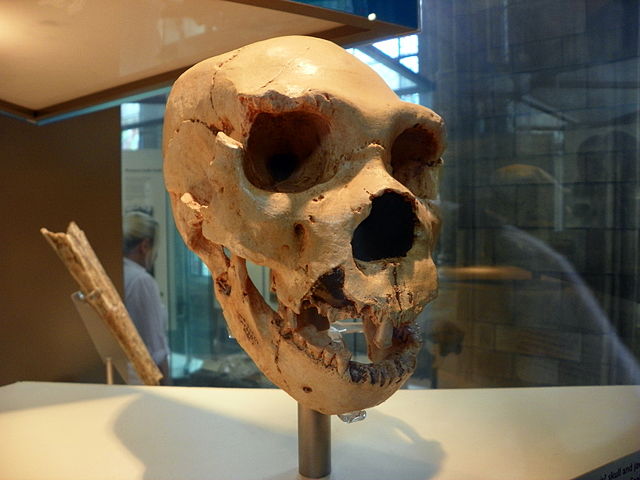Homo heidelbergensis is an extinct species of archaic humans that lived in Africa, Europe, and possibly Asia between approximately 700,000 and 200,000 years ago. It is considered a key transitional species in human evolution and is believed to be the common ancestor of both Neanderthals (Homo neanderthalensis) and Homo sapiens (modern humans). Here are some key aspects of Homo heidelbergensis:
Geographic Distribution:
- Homo heidelbergensis had a wide geographic distribution, with fossil finds in Africa, Europe, and possibly Asia. Notable sites include the Sima de los Huesos in Spain, Atapuerca in Spain, Dmanisi in Georgia, and sites in East Africa.

- Homo heidelbergensis had a wide geographic distribution, with fossil finds in Africa, Europe, and possibly Asia. Notable sites include the Sima de los Huesos in Spain, Atapuerca in Spain, Dmanisi in Georgia, and sites in East Africa.
Cranial Characteristics:
- The cranial capacity of Homo heidelbergensis ranged from about 1,100 to 1,400 cubic centimeters, which is larger than that of earlier hominins like Homo erectus. The skull features a more rounded shape compared to the elongated skulls of earlier species.
Facial Features:
- The face of Homo heidelbergensis is more modern-looking compared to earlier hominins. The brow ridges are less prominent, and the face is less prognathic (projecting forward). These features are more similar to those seen in Homo sapiens.
Body Structure:
- Homo heidelbergensis individuals had a robust build, adapted to a physically demanding lifestyle. Their postcranial skeletons show a combination of features seen in both earlier Homo species and later Homo sapiens.
Tool Use and Technology:
- Homo heidelbergensis is associated with an Acheulean tool industry, characterized by large bifacial handaxes and cleavers. The sophistication of their tools suggests an improvement in technological capabilities compared to earlier hominins.
Hunting and Adaptation:
- Homo heidelbergensis is believed to have been an effective hunter. Fossil evidence, such as butchered animal bones found at archaeological sites, indicates a reliance on large game. The ability to hunt and process large animals may have been a key factor in their ability to survive in diverse environments.
Cultural Complexity:
- The presence of more sophisticated tools, evidence of fire use, and potential symbolic behavior (as suggested by the use of pigments and shell beads at some sites) hint at a level of cultural complexity beyond earlier hominins. This increased cultural adaptability may have contributed to their success.
Divergence into Neanderthals and Modern Humans:
- Homo heidelbergensis is considered a common ancestor of Neanderthals and modern humans. Some researchers propose that populations of Homo heidelbergensis that remained in Africa gave rise to Homo sapiens, while those that migrated to Europe and Asia eventually evolved into Neanderthals.
Extinction:
- Homo heidelbergensis is thought to have gone extinct around 200,000 years ago. The reasons for their extinction are not entirely clear, but competition with other hominin species, environmental changes, or a combination of factors may have played a role.
Homo heidelbergensis occupies a crucial place in the evolutionary timeline, representing a bridge between earlier hominins and later Homo species, including Neanderthals and modern humans. The study of this species contributes significantly to our understanding of human evolution and the factors that shaped the development of distinct human lineages.











